Indian puppetry, known as “Kathputli” in many parts of the country, is more than just entertainment—it’s a rich cultural tradition that reflects the heritage, artistry, and storytelling spirit of India. Puppetry has been a part of India’s performing arts for centuries, blending craft, music, and narrative to create a captivating form of expression.
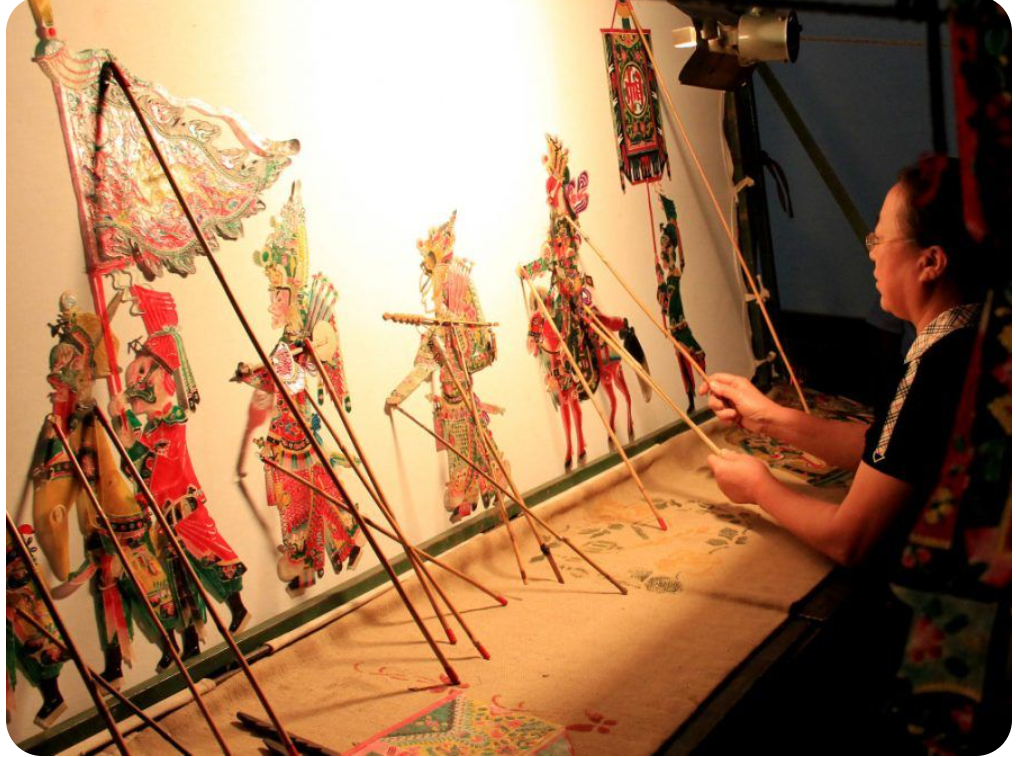
Puppetry is a form of performing art in which puppets—objects or figures, often resembling humans, animals, or mythical characters—are manipulated by a puppeteer to create the illusion of life. Puppets are controlled through strings, rods, hands, or other mechanisms, and they are used to enact stories, entertain, or convey messages.
Puppetry can take various forms, including:
- String Puppets (Marionettes): Controlled by strings attached to different parts of the puppet.
- Shadow Puppets: Flat figures projected onto a screen with a light source.
- Hand Puppets: Worn on the puppeteer’s hand and moved to act out scenes.
- Rod Puppets: Controlled by rods attached to the hands and other parts of the puppet.
In India, puppetry is deeply rooted in cultural traditions, serving as a medium for storytelling, educating, and preserving myths, folklore, and values.
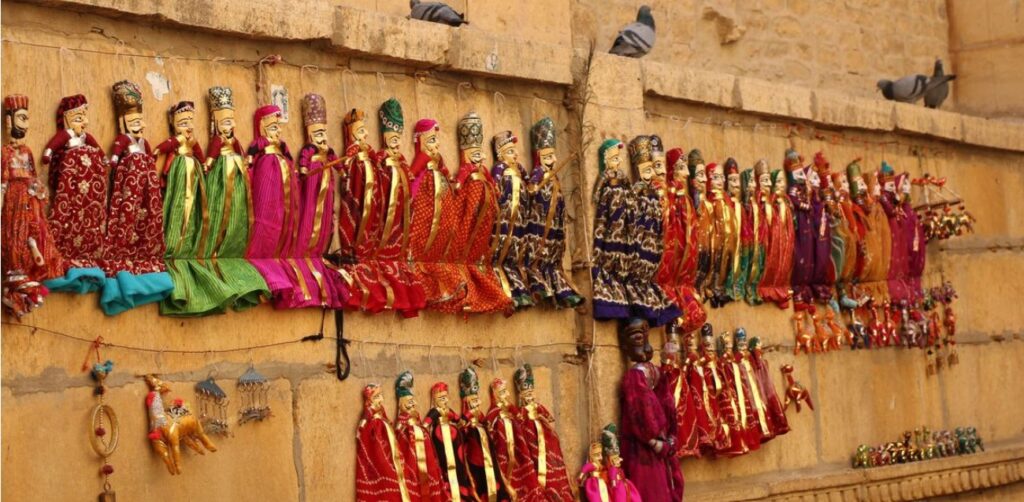
Rows of rajasthani puppets lined up on the wall for sale..they catch your eye with the colorsplash..beautiful tiny puppets.. This is very traditional of rajasthan..skilled artists perform the puppet shows along with folk music with these dolls..which is a source of income for many in this region.
1. The Origins of Indian Puppetry
The roots of puppetry in India trace back to ancient times, with mentions in texts like the Natya Shastra and references to puppetry as a tool for storytelling. Puppets were initially used to narrate epics such as the Ramayana and Mahabharata, making these timeless tales accessible to the masses.
2. Diverse Regional Styles
Indian puppetry is incredibly diverse, with each region offering a distinct style:
- Kathputli of Rajasthan: Wooden puppets adorned in vibrant traditional attire perform tales of kings, warriors, and folklore.
- Tholu Bommalata of Andhra Pradesh: Intricately crafted leather shadow puppets depict mythological stories against illuminated backdrops.
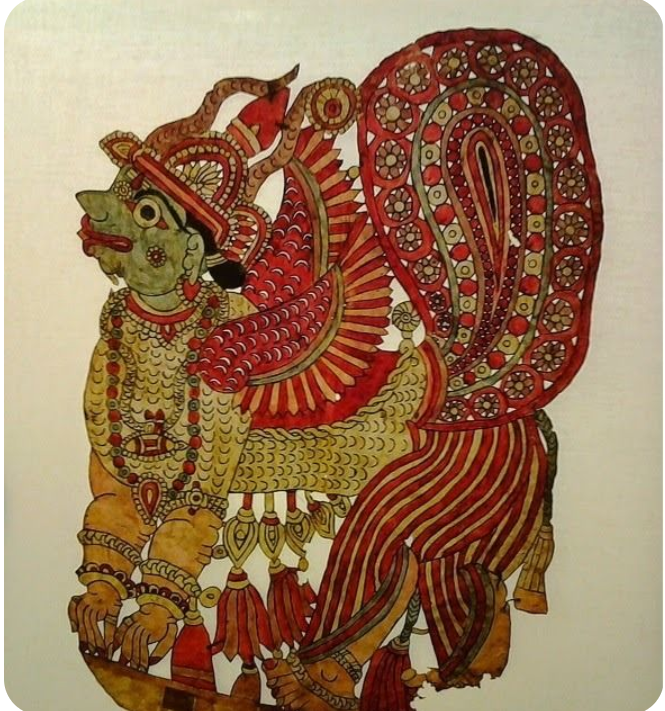
Ancient Craft of Shadow Puppetry using leather cut outs . Karnataka and Andhra Pradesh , South India
- Gombeyatta of Karnataka: String puppetry combined with music and dance traditions from southern India.
- Putul Nach of Bengal: Rod puppets that bring to life stories of love, adventure, and mythology.
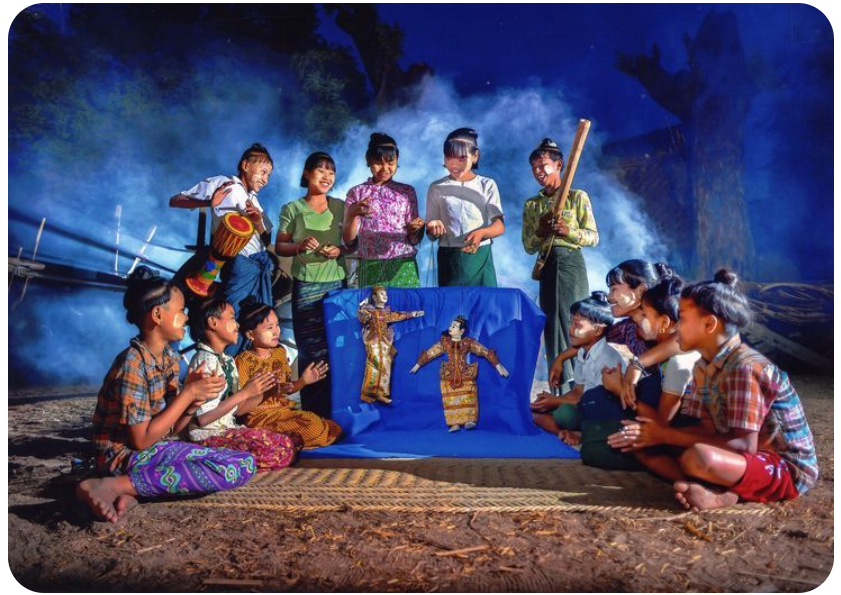
How lovely is it ! Myanmar puppet (Yoke Thay), one of our traditional things. I believe that you will be happy by watching traditional puppet show in Myanmar. #Myanmar #Mymyanmar #MyanmarBeEnchanted #puppet #Yokethay #Myanmartraditional
3. A Tool for Storytelling and Education
Indian puppetry is not just about entertainment; it serves as a medium to convey moral lessons, cultural values, and social messages. Puppet shows often highlight themes of justice, honesty, and human virtues, making them educational for both children and adults.
4. The Craftsmanship Behind Puppets
Creating puppets is an art in itself. Artisans use materials like wood, leather, and cloth to craft lifelike figures. These puppets are painted with intricate designs and dressed in colorful, traditional costumes, showcasing the diversity of Indian craftsmanship.
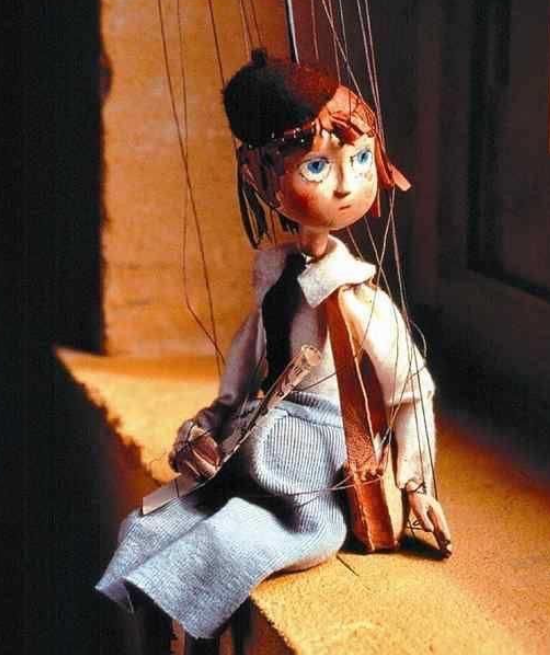
5. Puppetry in Modern Times
Despite its ancient roots, Indian puppetry continues to adapt and evolve. Today, puppeteers incorporate contemporary stories, technology, and global influences into their performances. Efforts are being made to revive this art form through workshops, festivals, and collaborations with modern theater.
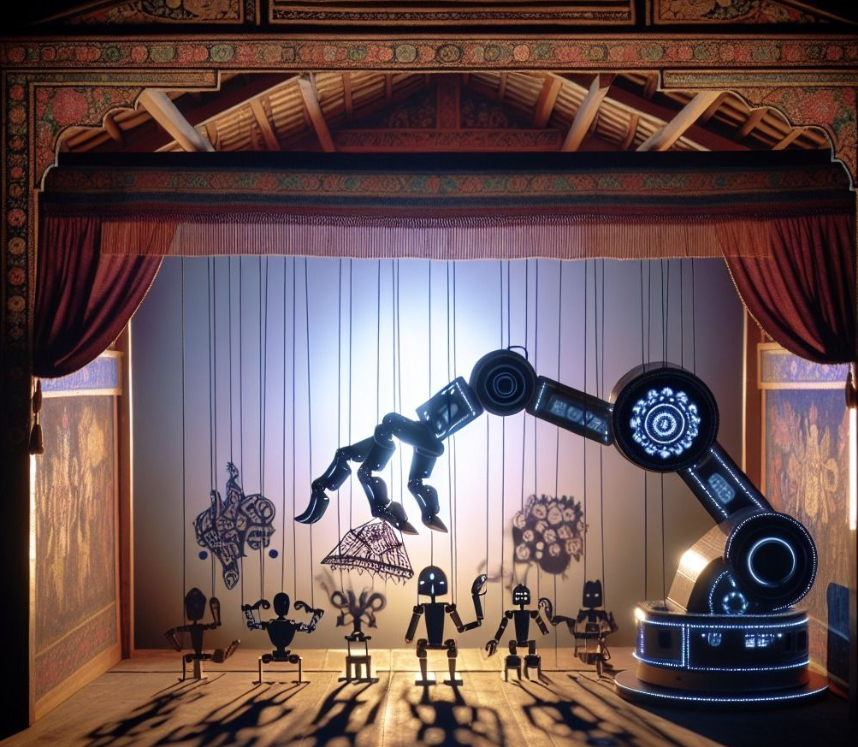
The Cultural Legacy Lives On
Indian puppetry is a testament to the nation’s creativity and storytelling heritage. As an art form, it bridges the past and present, offering a glimpse into India’s rich cultural tapestry while continuing to inspire and educate future generations.


